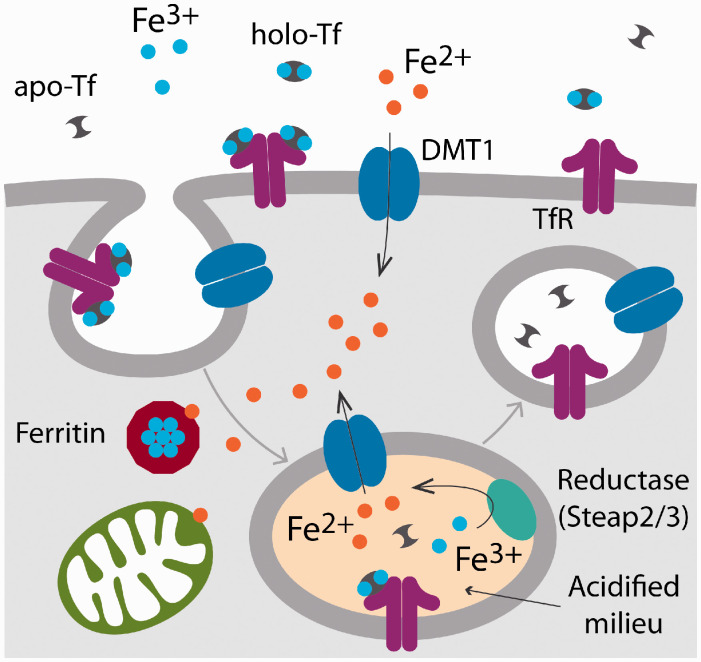Figure 1.
Schematic Representation of the Tf Cycle. Fe3+ in the brain interstitial fluid binds to apo-Tf to form holo‑Tf. Holo‑Tf binds to TfR on the cell surface. The TfR–holo-Tf complex undergoes endocytosis through clathrin pit formation. The endosome then acidifies, and the endosomal metalloreductase reduces Fe3+ to Fe2+, allowing iron, now released from Tf, to be transported into the cytosol by DMT1. Iron can then bind to chaperones that donate iron to specific proteins (not shown), enter mitochondria, or be stored in ferritin. At the plasma membrane, DMT1 can uptake Fe2+ independent of the Tf cycle. Finally, apo-Tf and the TfR are recycled back to the luminal membrane. DMT1: divalent metal transporter 1.

